Planning a vegetable garden can be hard work. Some plants need a ton of room to spread out, while others have a very small footprint. So finding the perfect spot for each plant is important.
When it comes to peppers, there is quite a bit of variation in size. Knowing the variety and species you are growing will help you understand just how large the plants will grow by the end of the season.
In this article, I’ll share the average height and width of various pepper plants in each species. This should help you space your plants properly and avoid shading out other nearby plants. Let’s get started!
Quick answer: Pepper plants can grow anywhere from 1-10 feet tall, but most will grow to about 3-4 feet in height. Plant height depends mostly on the variety you are growing and plant care practices.
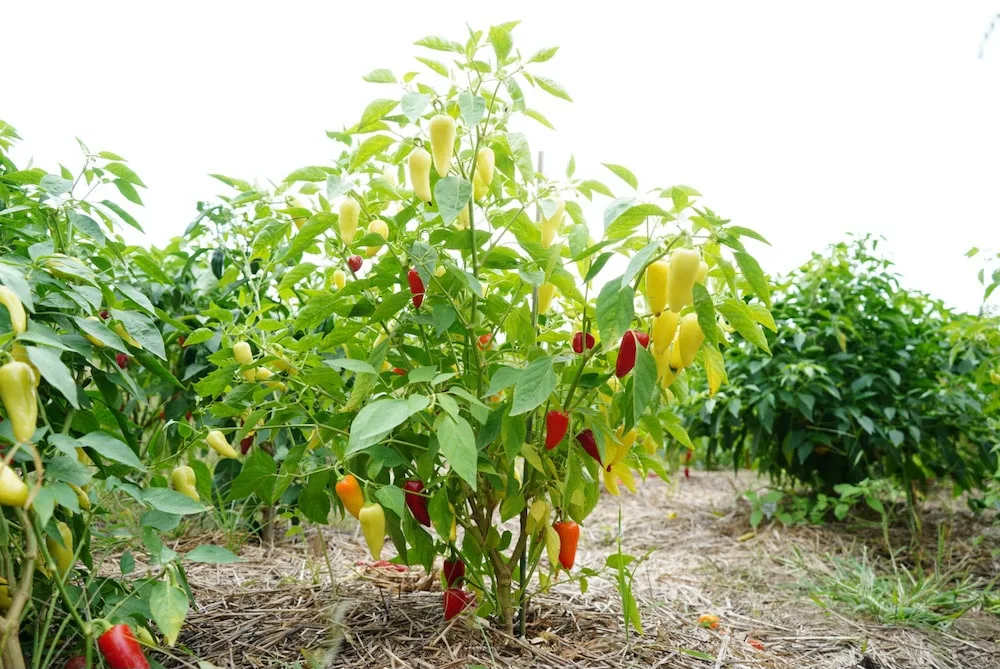
Factors that can change pepper plant height
While the size of each pepper plant will vary naturally, there are several growing factors to consider. While my bell pepper plant may reach just 3 feet, yours may thrive and grow to 5 feet, depending on how you care for it.
- Longer growing seasons will result in larger plants. If you live in a warm climate with a mild winter, your plants will have more time to grow taller. I’d highly recommend using a tomato cage for your peppers.
- Pruning techniques can be used to grow peppers tall and skinny rather than bushy. In the commercial bell pepper industry, plants are pruned to 1 or 2 main stems, then trellised up string, resulting in very tall, but very slender plants.
- More fertile and loose soil will lead to faster growth. Peppers like rich, fluffy soil with plenty of organic matter mixed in. If you grow in potting soil, the plants can grow quickly, resulting in a taller plant.
- Larger containers lead to larger plants. If you are growing in containers, make sure you choose a pot size that is large enough. Most pepper varieties will grow well in a 5 gallon container, but some will benefit from even more room. For example, some of the C. chinense varieties, like the dorset naga, can grow to be massive if given 30+ gallons of soil!
- Lighting conditions can impact overall plant growth. All plants need light to grow, but peppers like a lot of it. Plant them in full sun conditions to get the best growth and fruit sets, and avoid shading them with other nearby plants or structures.
So while each pepper plant has a “typical” height range, all of these environmental factors can significantly change the actual outcome.
Bell pepper plant size (2-4 feet tall)
By far the most common type of pepper plant for home gardeners is the bell pepper. There are countless types to choose from, ranging in color, size, and shape.
However, in our experience, most bell pepper plants share the same growth pattern and size. Therefore, we’ll generalize by saying that bell pepper plants grow between 2-3 feet tall in a typical growing season. With that being said, the actual height of your plants can vary based on environmental factors.
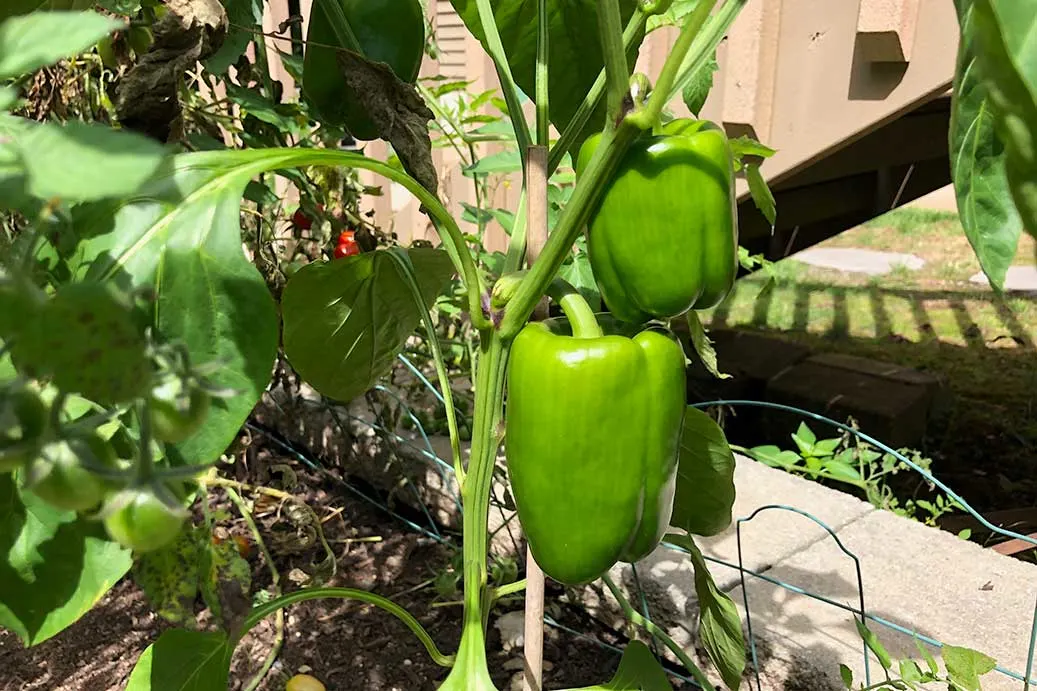
In commercial growing, bell peppers can grow to be up to 13 feet tall!
Alberta.ca
Home gardeners typically grow without pruning side shoots, so the result is a bushier, shorter bell pepper plant. Some cultivars may be taller, but expect your bells to stay around an average of 3′ in height.
Other C. annuum types (2-4+ feet tall)
Jalapeños, banana peppers, and serrano peppers are also very popular in home gardens. These come from the same species as bell pepper (C. annuum), but have different shapes, flavors, and heat levels.
When it comes to the size of C. annuum varieties, there is a lot of variation. For example, Thai peppers typically grow around 1-2 feet tall. The Carmen pepper, on the other hand, can grow 7 feet or taller in a single season!
Cayenne peppers, another C. annuum type, can vary widely in size based on the type grown. For example, the “cayennetta” hybrid variety grows to a compact height of just 18″. “Joe’s long” cayenne grows well over 3′.
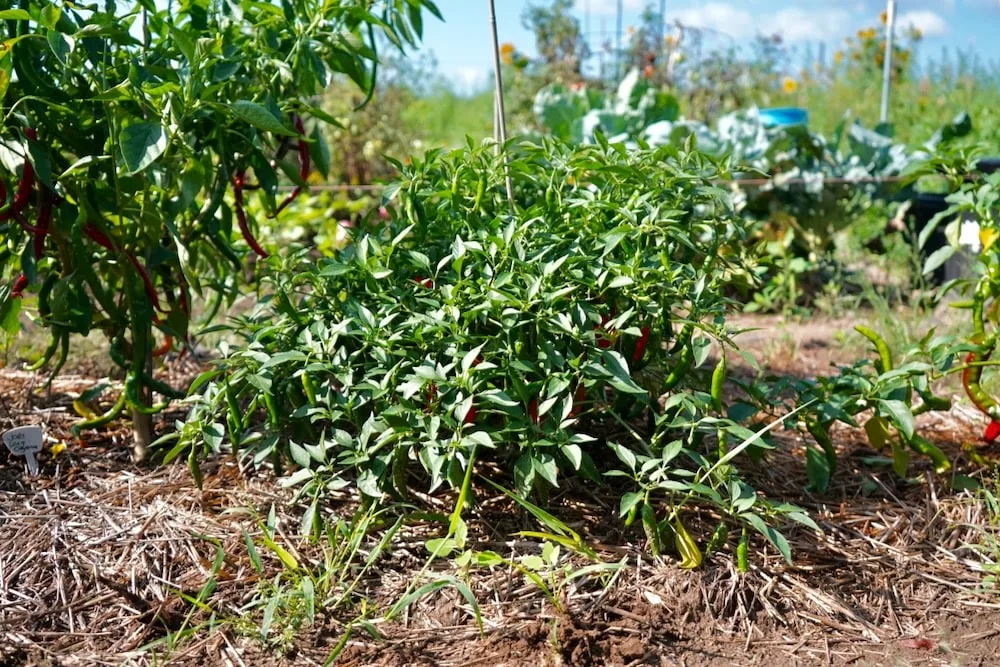
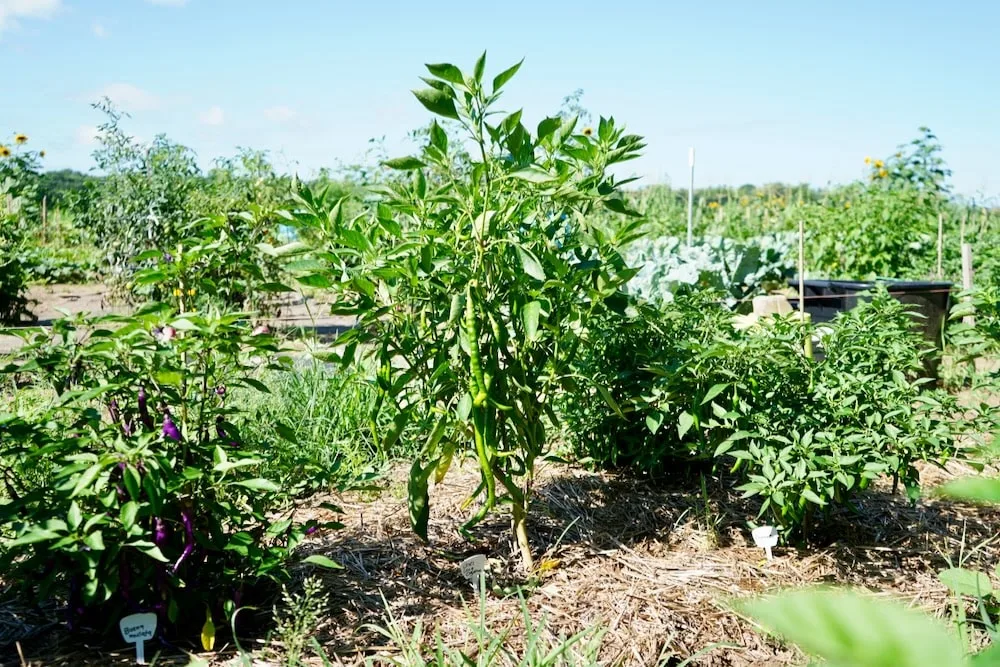
Jalapeños tend to be large, bushy plants with heavy fruit sets. In ideal conditions, and without pruning, jalapeños are usually between 3-4 feet tall by the end of the season.
Banana peppers can also vary, but in our experience these plants are vigorous and tall. Banana peppers commonly grow to 3 or 4 feet tall.
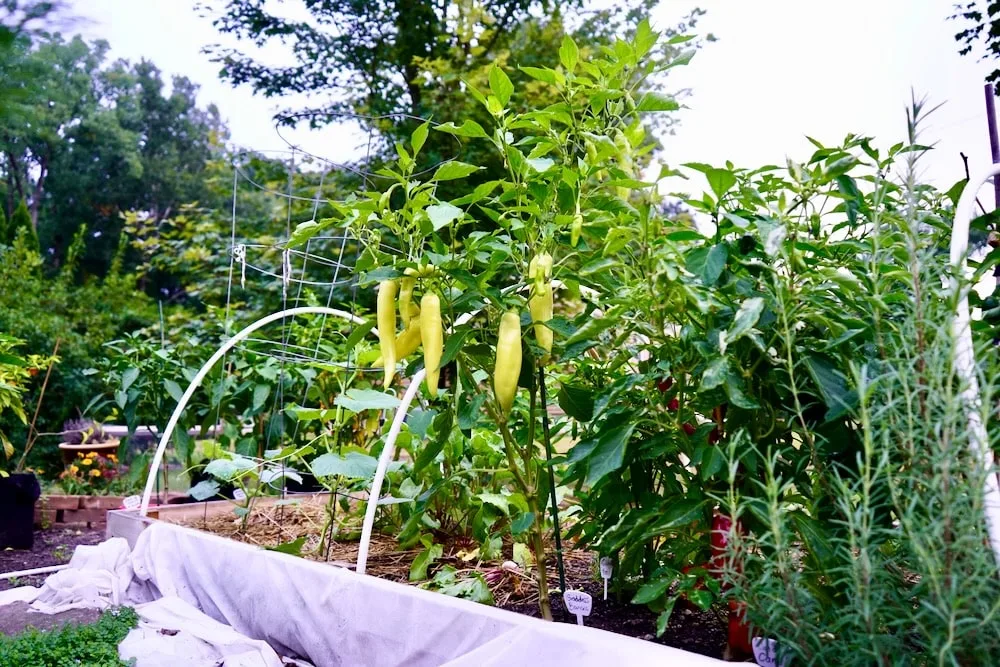
While each grower’s result will vary, the overall size across the C. annuum species usually falls between 2-4 feet, and most commonly around 3 feet in height.
C. chinense pepper plant size (2-6 feet tall)
Capsicum chinense is the species home to the world’s hottest peppers. This includes the ghost pepper, scotch bonnet, habanero, carolina reaper, and many other superhots.
It is also home to some of the largest plants. Many of the varieties we have grown from this species seem to grow “endlessly.” In other words, they can just keep getting bigger and bigger with enough time to do so.
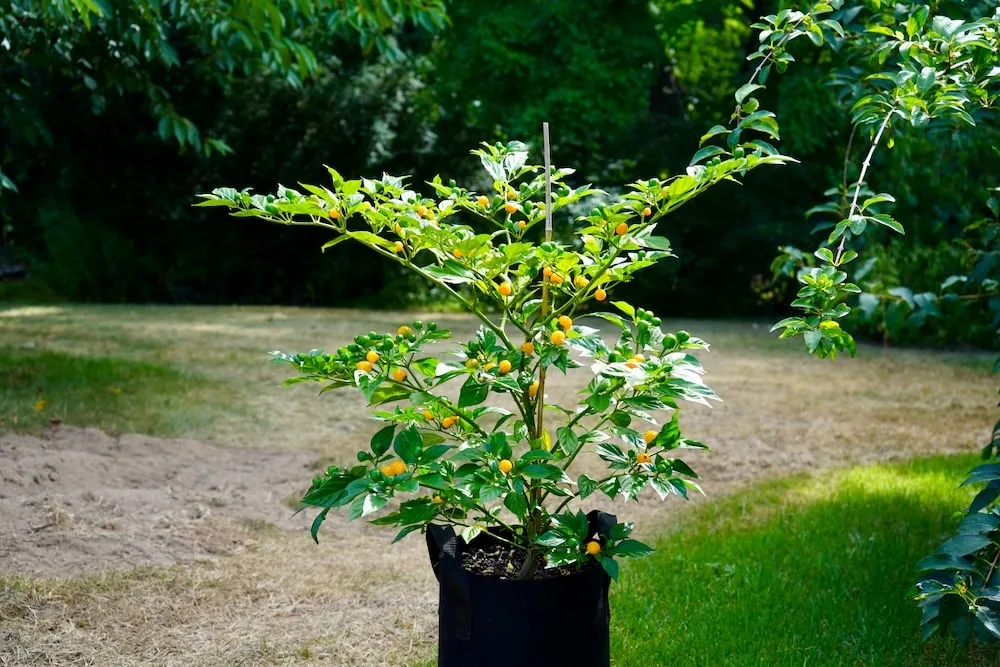
However, in the real world (and more importantly, here in zone 6a), they will eventually reach a maximum height. For us, habanero-type peppers grow to an average height of 3-5 feet.
The size of these plants is often not all that tall, but rather wide. One of our potted ghost pepper plants reached a height of about 2.5 feet, but was over 5 feet across!
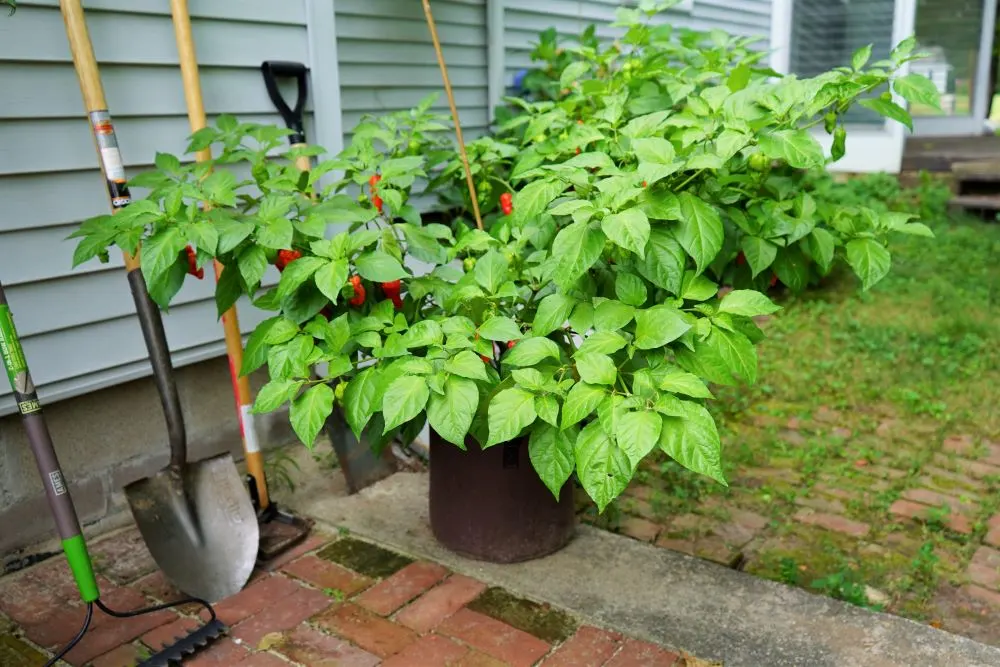
C. chinense types are also very sensitive to the container size. The larger the pot, the larger the plant. So a 5 gallon pot may result in a 2 foot plant, but a 40 gallon pot may give you a 6 foot monster!
C. baccatum species plant size (3-8+ feet tall)
The Capsicum baccatum species is known for its tall and highly productive pepper plants. There are many popular types, including the sugar rush peach, mad hatter, and aji amarillo varieties.
Once again, how you grow these plants will dictate how tall they get. However, it is not uncommon to have C. baccatum pepper plants grow to be very tall.
In general, C. baccatum pepper plants will grow anywhere from 3-8+ feet in height. This will vary based on the duration of the growing season, as well as trellising and pruning methods used. Either way, this species is home to some of the tallest varieties we have grown!
The baccatum species is more vine-like than other peppers, and is easy to trellis. I highly recommend staking your baccatum plants with a tall, central stake. Place the stake in the ground early in the season to avoid damaging the roots early on. Then, attach the plant to the stake as it grows taller.
Tips for growing bigger peppers
If you want larger pepper plants, here are some tips to be successful:
- Use plant stakes. If you don’t stake your peppers, they will eventually become top-heavy and fall over. Early in the season, place a stake or tomato cage in the growing location where you plan to plant your peppers.
- Loosen soil before planting. Use a pitchfork to gently loosen your garden soil in the early spring. This makes it easier for the roots to penetrate and reach deeper.
- Grow in larger pots. Most varieties will benefit from having at least 5 gallons of space, and ideally more.
- Start seeds early. If you have a shorter growing season, start your seeds early to give your plants more time to mature. A grow light makes all the difference in the first 6-8 weeks of growth!
- Get our eBook. If you want to grow great pepper plants, try reading our eBook Growing Perfect Peppers.
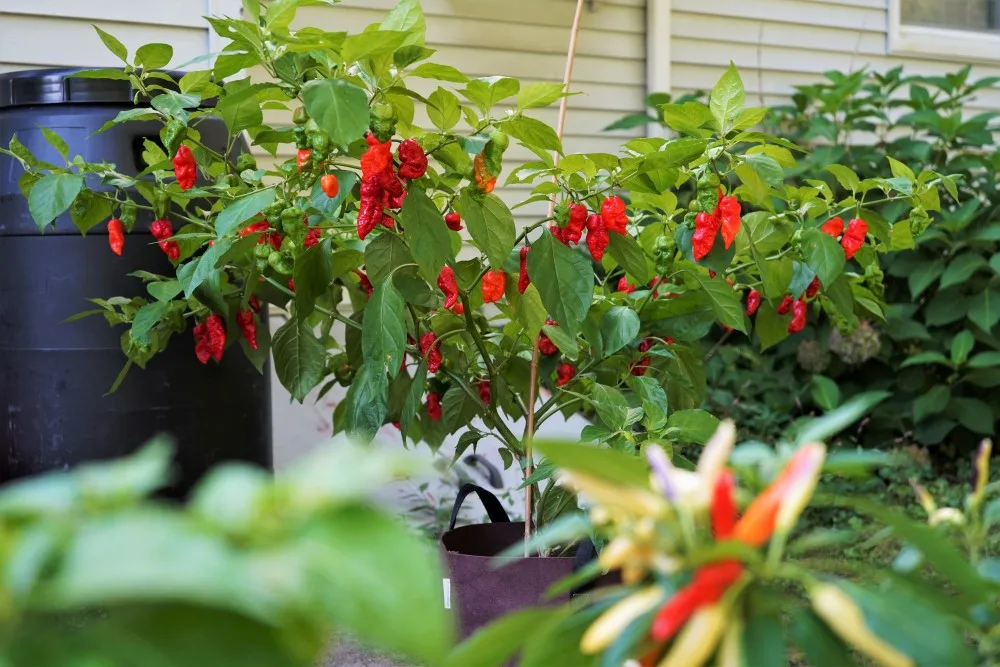
So, don’t pay too much attention to the “expected height” on your pepper plant seed packet. After all, pepper plants are perennial, and can grow to be truly massive with enough time.
What is the tallest pepper plant you have grown? We have grown aji plants taller than we are, and that is big enough for us.

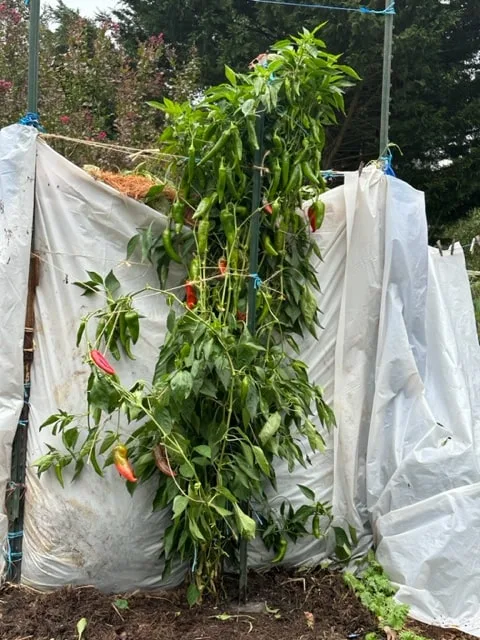
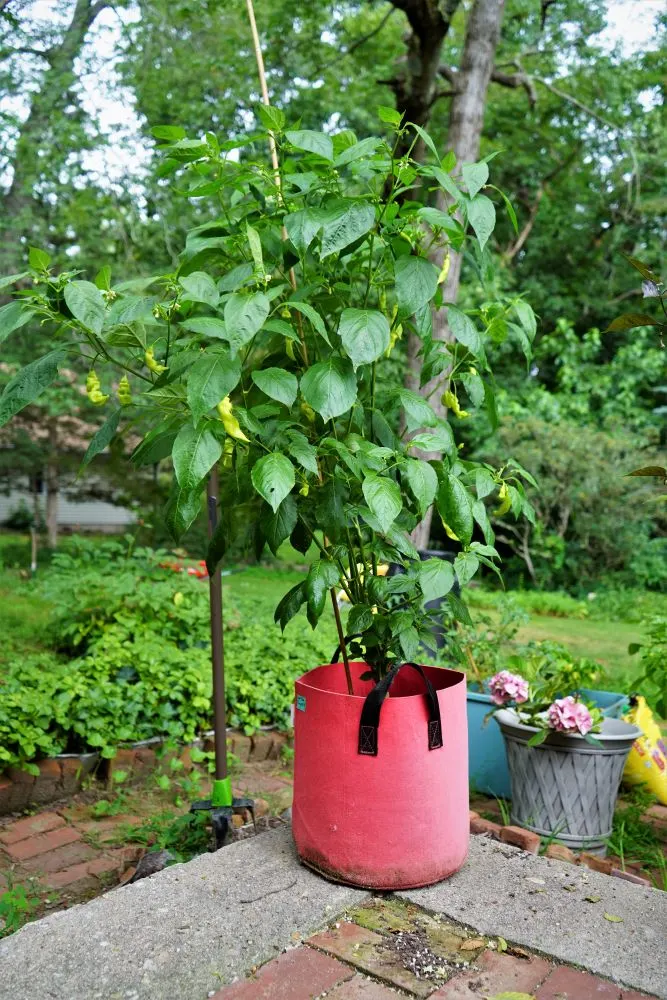

Richard
Thursday 20th of July 2023
hi, why do pepper plants in green houses grow so tall
peppergeek
Thursday 20th of July 2023
It has to do with how they prune and train them. They are spaced closer, so less light reaches the sides. They may also prune off side growth to encourage the plants to grow taller instead of bushy.
Martin
Sunday 11th of June 2023
I’m growing a Korean annuum variety in my conservatory and it is flowering well and nearly 9 feet tall, almost touching the roof. I can’t reach any of the top growth to pollinate the flowers, remove pests or harvest the fruit. I’ve made the drastic decision to cut off all the tallest branches to the point I can reach them, which is about 8 feet. Was this a bad idea and will it harm my plant?
peppergeek
Monday 12th of June 2023
No, it sounds like your plant is happy in its location, I'm sure it will just grow back from the lower nodes! Would love to see a picture of it, feel free to share on our subreddit here: https://reddit.com/r/peppergeek
Jerry
Thursday 2nd of February 2023
How long do I need to keep heating mats under my seedlings? My room temperature is a constant 72 degrees.
peppergeek
Saturday 4th of February 2023
Once the seeds sprout, the heating pad has done its job and can be removed/shut off. 72°F will be great for growing the plants from then on.
Lee
Sunday 22nd of January 2023
Capsicum Pubescens?
David Niemi
Sunday 22nd of January 2023
The tallest c. annuum I've had so far is a Haskorea (a medium-heat Syrian pepper, similar to Aleppo) that grew to about 7' tall. It was in a kind of special spot in my Old Garden where the soil is very fertile, there is good sun by forest standards, and it was competing with tomatoes (and winning!).
The second tallest has been a Jamaican Giant Cayenne that got to about 6' two years in a row in the same spot (the other end of the Old Garden, and with competition from tomatoes and perennial bushes). The same variety in the other garden oly grew to 3-4' high.
Chile de Arbol is known for being tall and narrow by its nature, they commonly reach 5' tall.